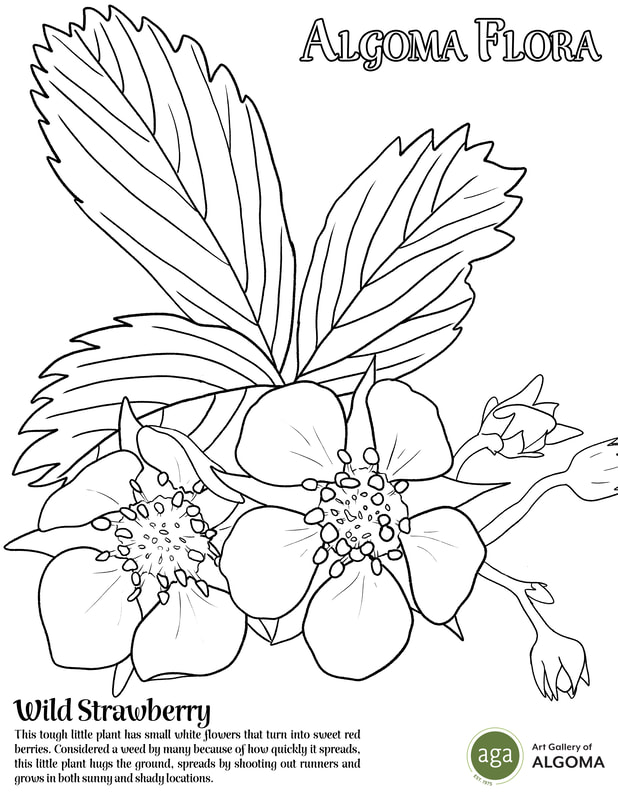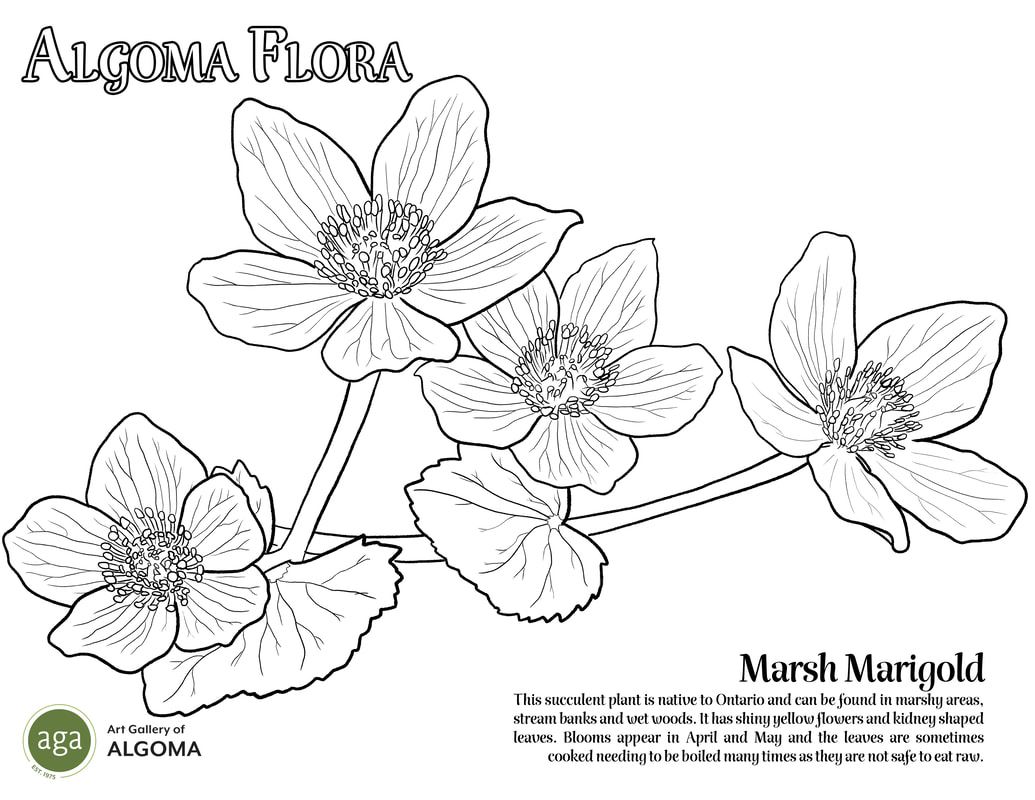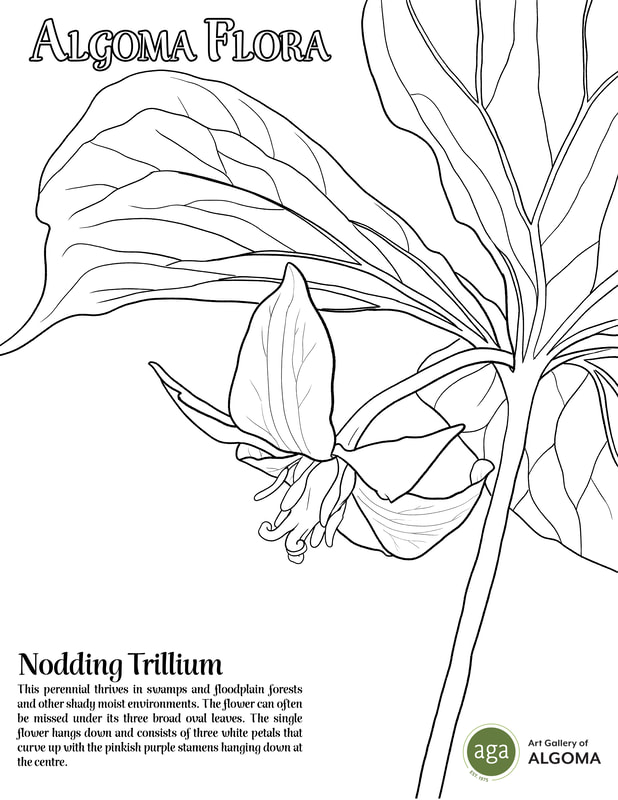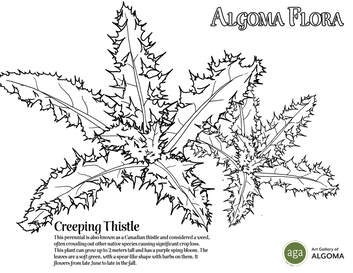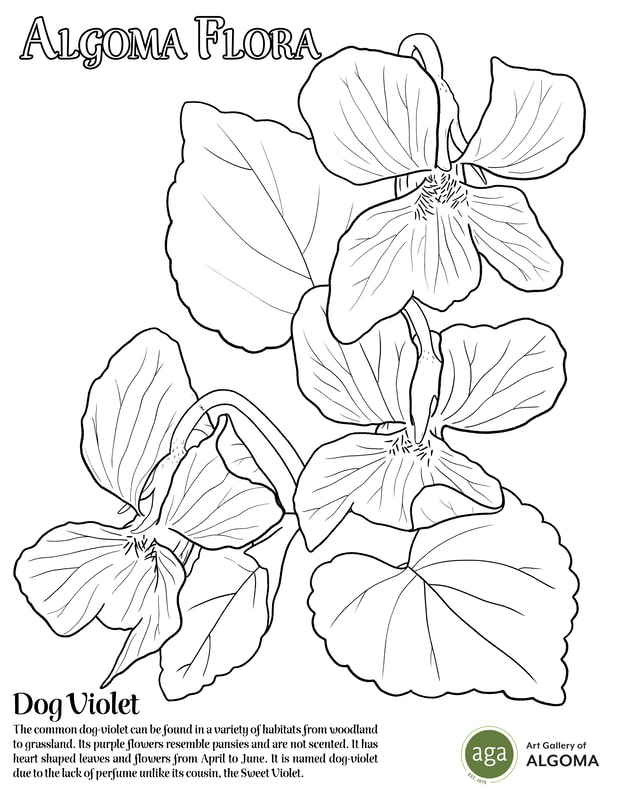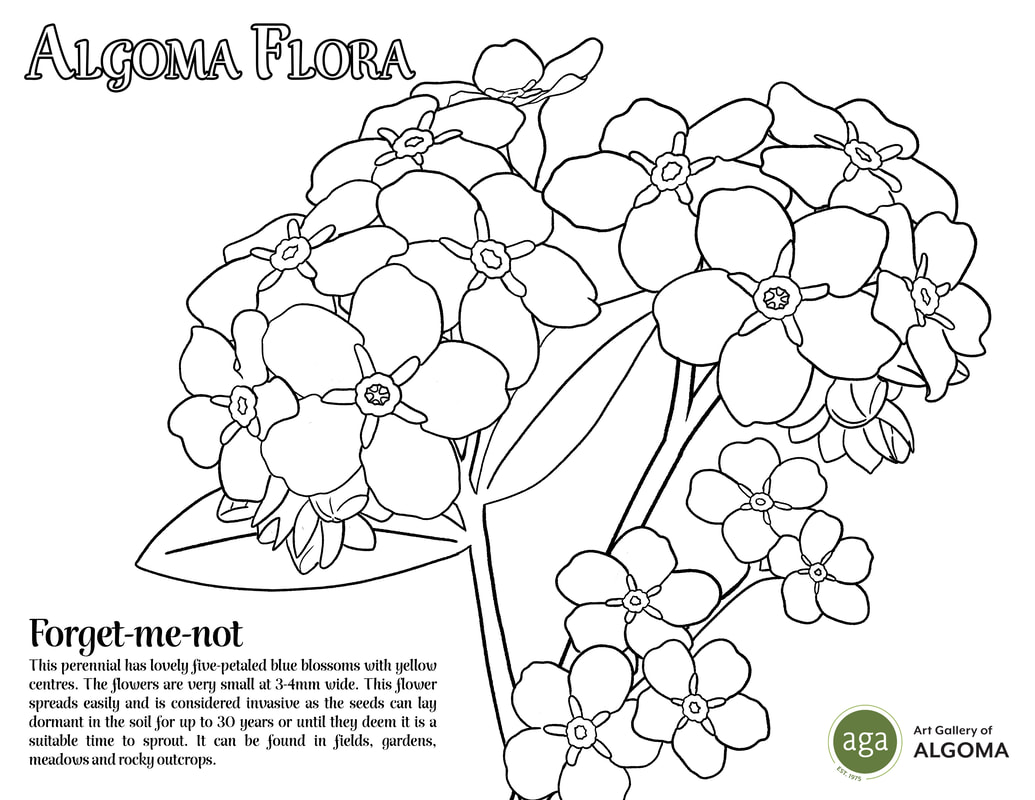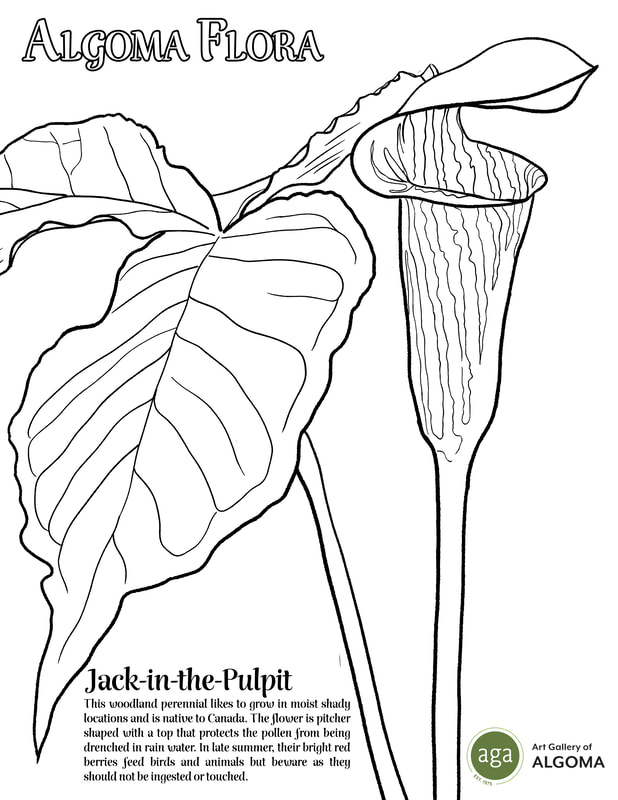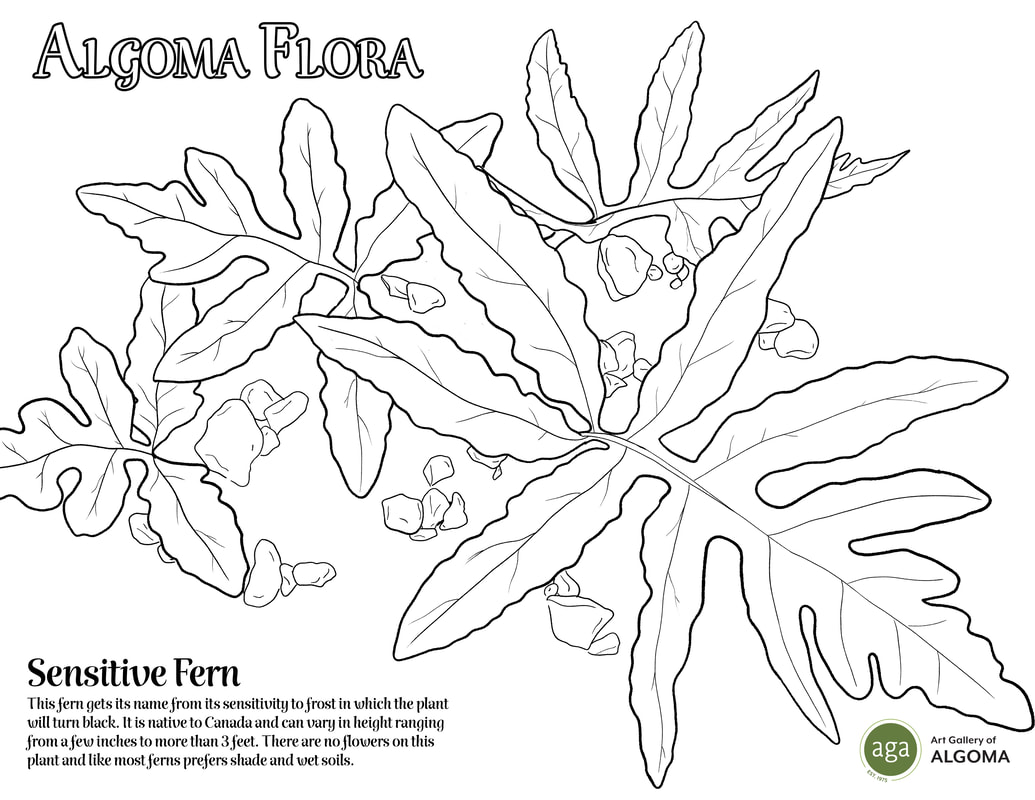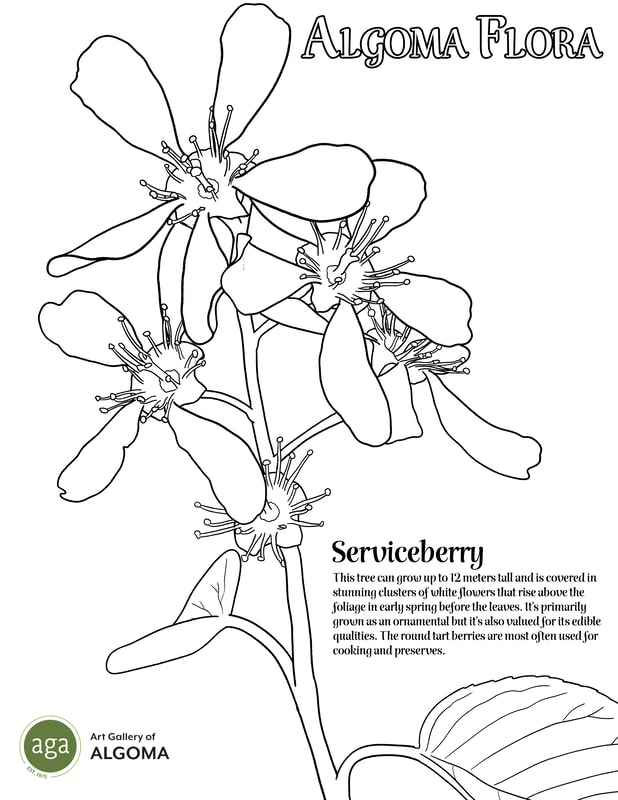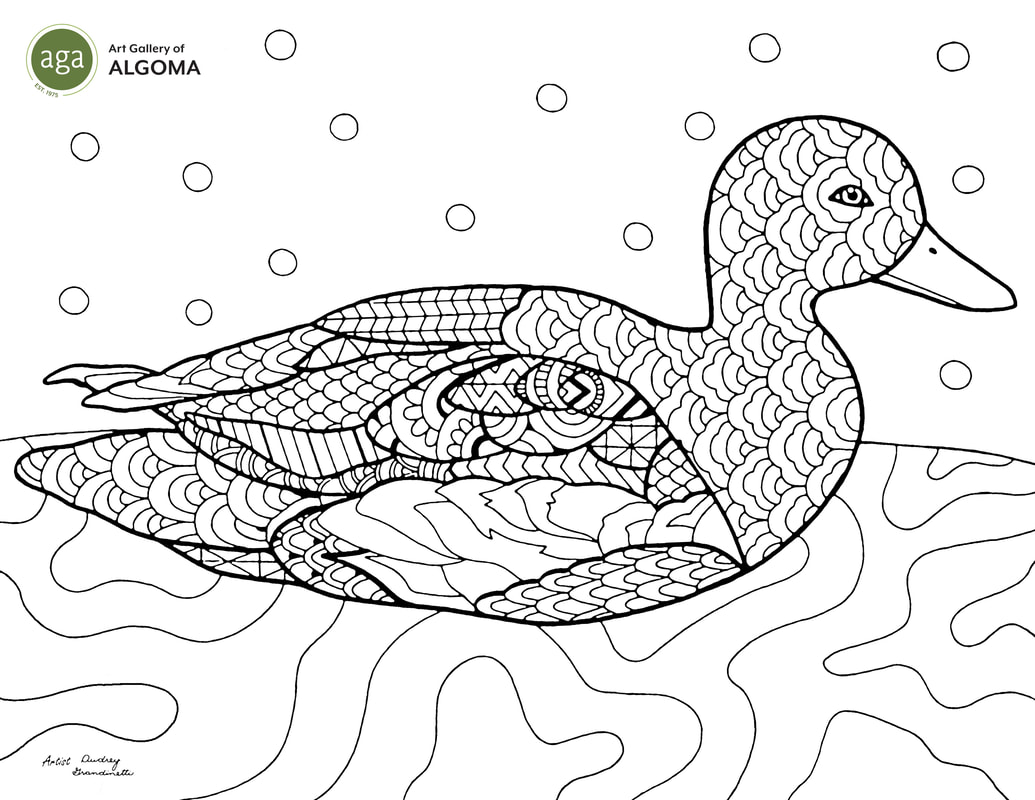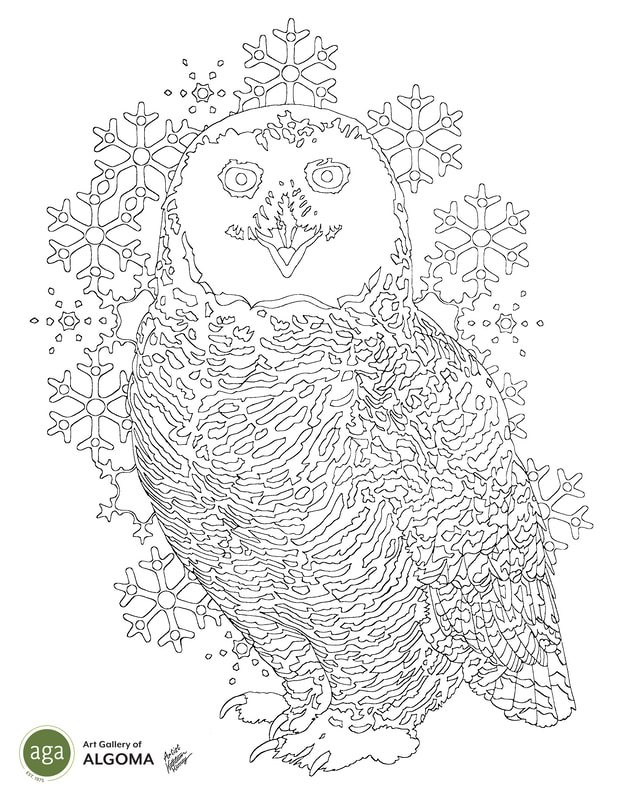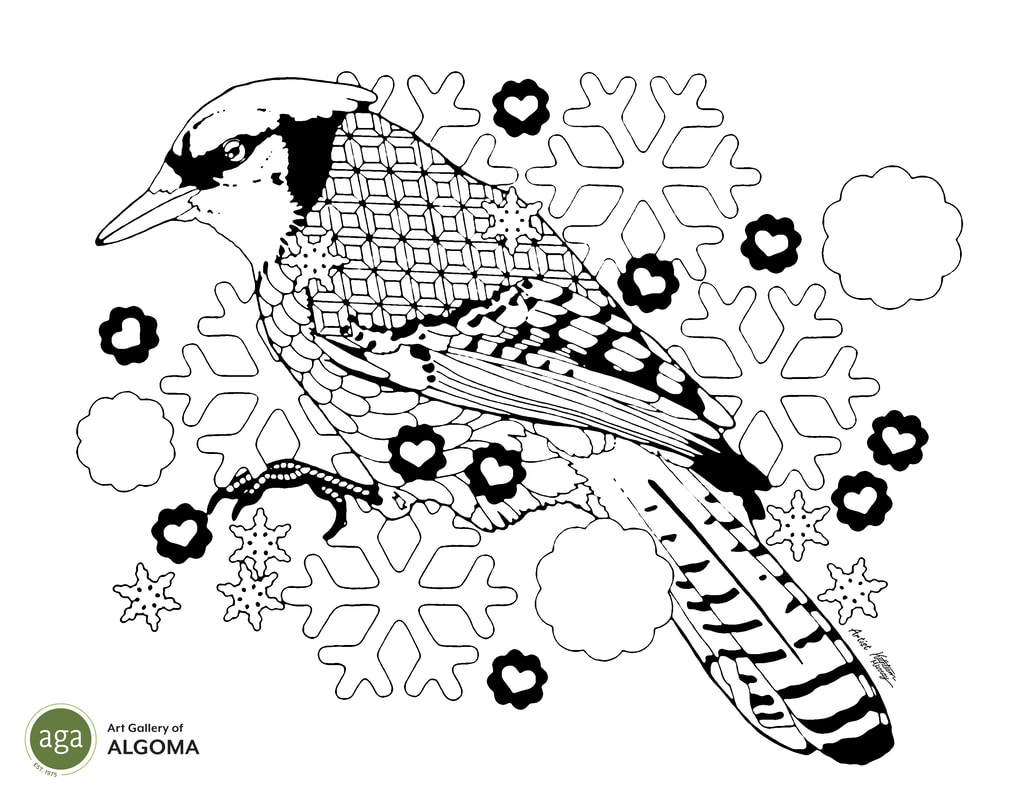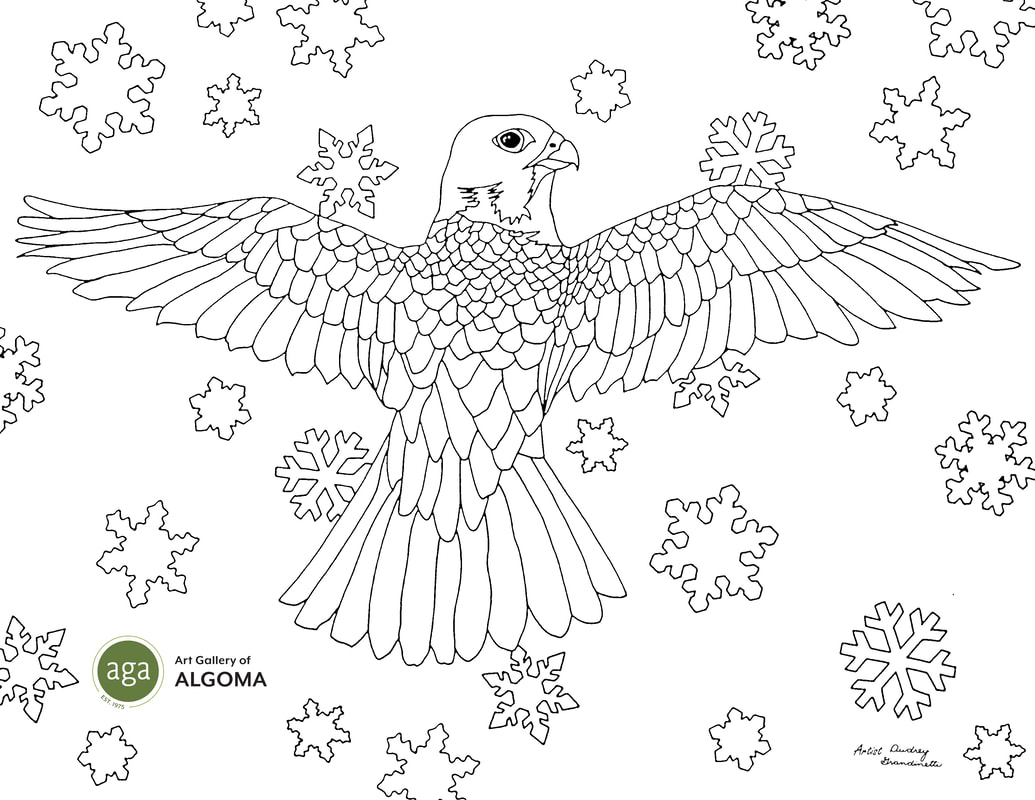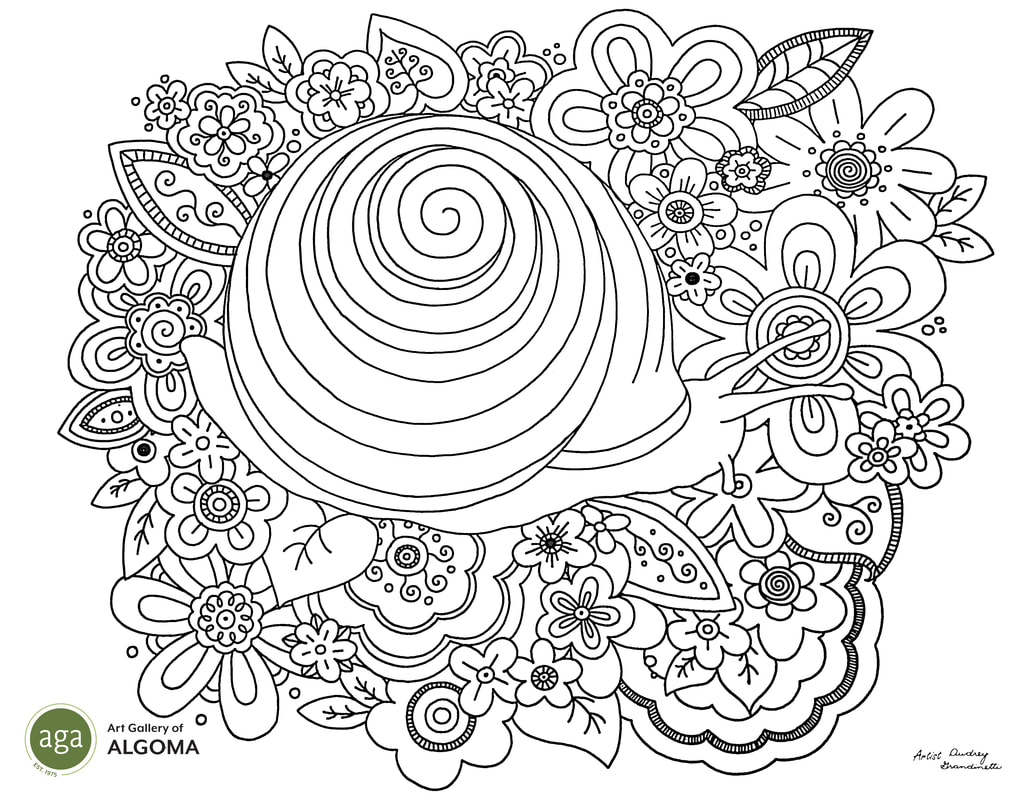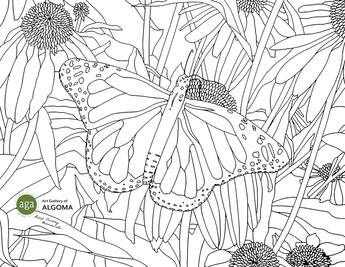Looking for something fun to do? Check out a variety of free colouring pages produced by the Art Gallery of Algoma.
Algoma Flora
Summer is here in Algoma and various plants and flowers have bloomed. Algoma Flora colouring page series explores various plants and flowers that can be found in the Algoma region, learn about these wonderful plants growing around us, print off the pages and get creative with colouring them!
Wild StrawberryThis tough little plant has small white flowers that turn into sweet red berries. Considered a weed by many because of how quickly it spreads, this little plant hugs the ground, spreads by shooting out runners and grows in both sunny and shady locations.
|
Marsh MarigoldThis succulent plant is native to Ontario and can be found in marshy areas, stream banks and wet woods. It has shiny yellow flowers and kidney-shaped leaves. Blooms appear in April and May and the leaves are sometimes cooked, needing to be boiled many times as they are not safe to eat raw.
|
Nodding TrilliumThis perennial thrives in swamps and floodplain forests and other shady moist environments. The flower can often be missed under its three broad oval leaves. The single flower hangs down and consists of three white petals that curve up with the pinkish purple stamens hanging down at the centre.
| ||||||||||||||||||
|
Forget-me-notThis perennial has lovely five-petaled blue blossoms with yellow centres. The flowers are very small at 3-4mm wide. This flower spreads easily and is considered invasive as the seeds can lay dormant in the soil for up to 30 years or until they deem it is a suitable time to sprout. It can be found in fields, gardens, meadows and rocky outcrops.
| ||||||||||||||||||||
Jack-in-the-PulpitThis woodland perennial likes to grow in moist shady locations and is native to Canada. The flower is pitcher-shaped with a top that protects the pollen from being drenched in rainwater. In late summer, their bright red berries feed birds and animals but beware as they should not be ingested or touched.
|
Sensitive FernThis fern gets its name from its sensitivity to frost in which the plant will turn black. It is native to Canada and can vary in height ranging from a few inches to more than 3 feet. There are no flowers on this plant and like most ferns prefers shade and wet soils.
|
Service BerryThis tree can grow up to 12 meters tall and is covered in stunning clusters of white flowers that rise above the foliage in early spring before the leaves. It's primarily grown as an ornamental but it's also valued for its edible qualities. The round tart berries are most often used for cooking and preserves.
| ||||||||||||||||||
Algoma Wildlife
The AGA has produced a free colouring page series about getting to know our local wildlife. Get outdoors and discover the wonderful wilderness, home to Algoma, then print off these colouring pages and colour them wild!
|
Blue JayHave you heard of a Blue Jay?
Did you know that Blue Jays are related to crows and ravens? A flock of ravens is called “an unkindness”. A flock of crows is called a “murder”. Did you know a flock of Blue Jays is called a “party”? Blue jays can gather in large flocks looking for peanuts and suet at your backyard feeder. You can recognize them by their funny and noisy calls. They like to sing out “jeer, jeer, jeer”! Artist: Kathleen Murray
| ||||||||||||||||||||
|
Monarch ButterflyHave you heard of a Monarch Butterfly?
Monarch Butterflies are one of the most popular butterflies in North America. These butterflies migrate annually in the late summer and fall from southern Canada and central United States to Florida, California, and Mexico, covering thousands of miles! These butterflies don’t get lost though because they have a magnetic compass to help them navigate. Monarch butterflies lay their eggs on Milkweed, which is what their caterpillars will eat once hatched. The milkweed plant is toxic, but Monarch Butterflies have evolved to tolerate it and even store the toxins making them poisonous to predators! Artist: Audrey Grandinetti
| ||||||||||||||||||||||

